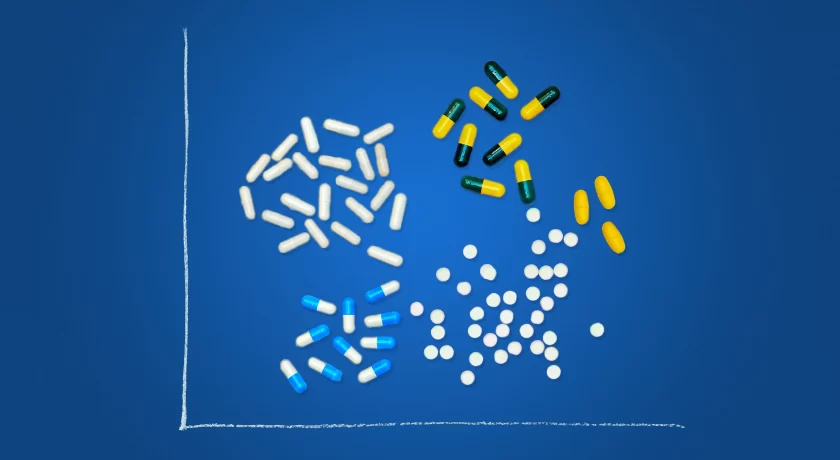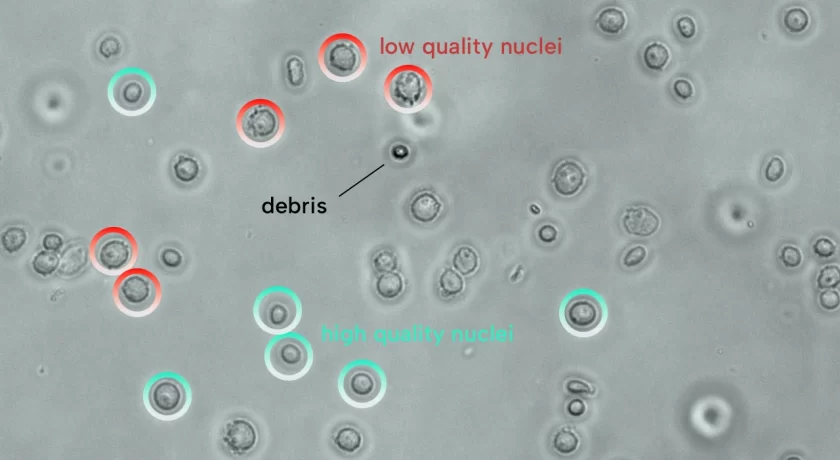
Before you get started with your first single-cell sequencing project, there are a few things you need to consider.
In this post, we summarize a few crucial points you need to think about before your first single-cell sequencing project:
Biological question
The biological question or hypothesis of your research is your most important consideration.
The most common question our clients ask us is how many cells or samples they should sequence.
The answer is usually: It depends on your biological question.
What are you trying to find out? What kind of results do you need to be able to answer this question? How are you going to validate the results from your single-cell sequencing project?
If you have a clear understanding of the biological question you need your experiment to answer, that will help you determine its set-up.
For example: if you are trying to map the gene expression programs in a sample that contains only a few different cell types, sequencing a few hundred cells might be enough. On the other hand, if you are trying to find a rare subpopulation that occurs in one in every thousand cells, you will likely need to sequence several thousand.
Your sample type
Once you’ve established your biological question and hypothesis, it’s time to look at your sample type. Different sample types lend themselves to different sequencing techniques, and these technical considerations have a bearing on the project’s design.
For more detailed information about the sequencing technologies we use, read: Which single-cell RNA sequencing technology should I use?
Let’s look at some examples.
Tissue type
Tissue type can dictate the sequencing technology that can be used.
For example, if you work in cardiology and you want to study cardiomyocytes, the size of the cells makes them incompatible with the 10x Genomics platform. In this case, SORT-seq is a more suitable option.
Take another example: brain cells. Working with post-mortem cells means that they may no longer be suitable for cryopreservation, which means that your only option would be to extract the nuclei from the tissue and perform single-nuclei sequencing.
The number of cells you can send us
The second important consideration is the number of cells you can send us. This determines which of our single-cell sequencing technologies is suitable for your project.
For a 10x Genomics project, we prefer to receive at least half a million cells per sample, in duplicate. As this is not always possible, we need to consider this carefully before we start.
Let’s look at a few examples of how that works.
- Firstly, let’s say you want to do a single-cell analysis of all the white blood cells from a group of patients. In this case, it’s easy to obtain millions of cells per sample for the analysis. Therefore, both 10x Genomics, SORT-seq and VASA-seq are suitable technologies to choose for your project.
- Secondly, if you are only interested in a very specific cell type and you want to perform a FACS sort to enrich your sample before sending it to us, this might result in too few cells for a 10x Genomics project. In that case, SORT-seq and VASA-seq are an excellent choice.
- And finally, your sample may naturally have a small number of cells, for example, a drosophila brain. To obtain millions of cells requires you to pool many different individuals together, which might not always be possible. In that case, SORT-seq and VASA-seq could be a good alternative.
Your budget
The final important consideration for your first single-cell project is of course your budget.
Single-cell sequencing is expensive, but it’s possible to keep your costs down through the careful design of your experiment.
We can help you find the best, most cost-effective set-up for your project. You’ll find much more information on this in our post on the cost of single-cell RNA sequencing.
Supercharge your mind with all the single-cell sequencing fundamentals with our ultimate guide


